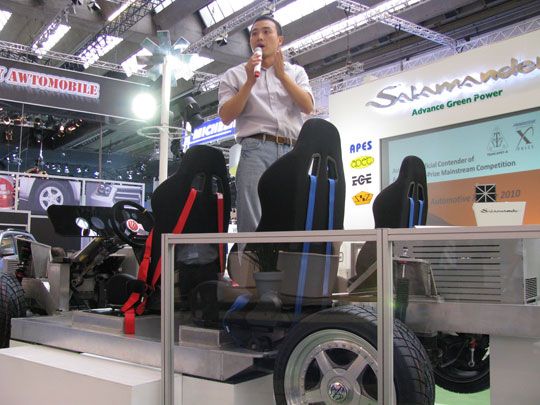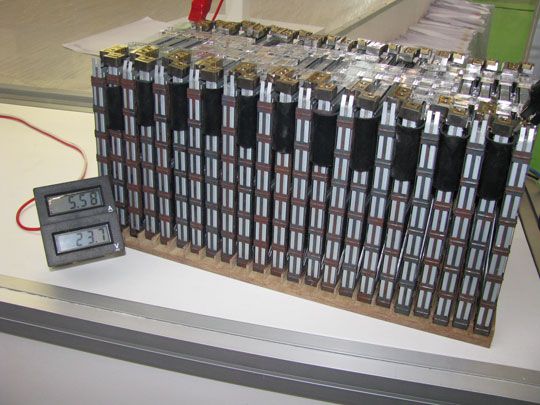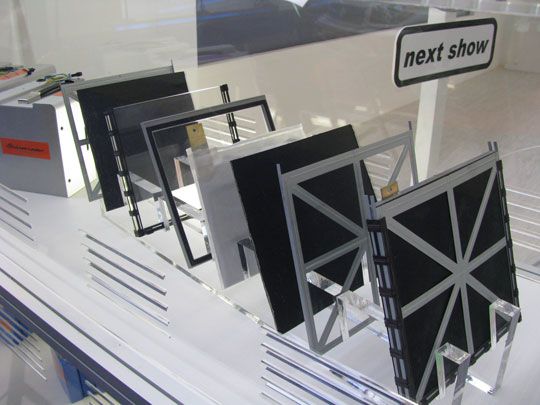FRANKFURT, Germany -- It's a very long shot, but someday there may be cars and buses whose main chemical byproduct is sunscreen.
APET, or Advanced Power and Energy Sources Transportation, is touting the idea of using a zinc-air fuel cell to power vehicles. Oxygen and water would be mixed with zinc in a fuel cell stack to produce electrons to charge a battery. The main byproduct of the reaction would be zinc oxide, which could then be converted back into zinc fuel or sold as a chemical. Converting zinc oxide back to zinc could be accomplished with solar thermal concentrators.
APET's key technology is a pouch filled with zinc that slides in and out of the fuel cell stack, said Andrew Huang, the CEO whose has worked for various battery companies.
"You can tell when the zinc has been used because it turns white," he said during an impromptu interview at the International Auto Show taking place this week in Frankfurt.
APET has created several fuel cells and built a car that it will show off later this year in Taipei. The picture with this article is one of its zinc fuel cells powering three 75 watt light bulbs. The initial target market will be buses in China and delivery vehicles.
A small, but growing number of companies say that the 30th element on the Periodic Table could go a long way toward solving the vexing problem of electrical storage. Switzerland's ReVolt Technologies raised 10 million euros earlier this year and 24 million euros in all to develop zinc air batteries. Other zinc companies include PowerAir, a zinc air spun out of Lawrence Berkeley Labs, PowerGenix (nickel zinc) and ZPower (silver zinc.) Researchers at the Paul Scherrer Institut are looked at ways to use zinc as a way to store heat at solar thermal power plants.
Zinc does not have the same energy density as lithium. Lithium-air batteries (which store energy by combining lithium with oxygen) can store 3,400 watt hours of energy per liter, said Jeff Dahn, a professor at Dalhousie University in Halifax, Canada during a recent presentation at IBM's Almaden Lab. Lithium-cobalt batteries can store 1,450 watt hours per liter. Zinc batteries hold 830 watt hours per kilogram.
But zinc is far safer than lithium and not prone to "thermal runaway reactions," say advocates.
It's also cheap: Pennies consist of 97.5 zinc. The fuel cell stack will cost around $3,600, way less than the estimated $15,000 to $20,000 cost of a lithium-ion battery for a compact electrical car.
A car with one of the zinc fuel cells will effectively run on 288 pouches and a fully-stocked fuel cell will take a car 300 to 350 kilometers. The zinc fuel cell also weighs far less, improving mileage and giving designers more freedom.
"It is more realistic than lithium air," Huang said. "We've done it."
Another knock against zinc batteries have been that they wear out after a few charges. APET gets around that with its removable pouch.
The challenge now? Moving from the fringe.

CEO Andrew Huang selling his zinc vision.

A modular zinc fuel cell.

An exploded version of the fuel cell. Water and oxygen mix with zinc to give off electrons. The main byproduct is largely inert zinc oxide.



